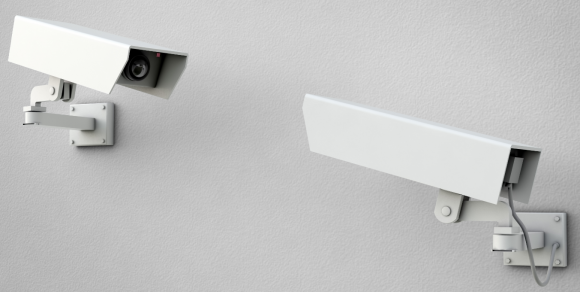Axis Communications — a maker of high-end security cameras whose devices can be found in many high-security areas — recently patched a dangerous coding flaw in virtually all of its products that an attacker could use to remotely seize control over or crash the devices.
The problem wasn’t specific to Axis, which seems to have reacted far more quickly than competitors to quash the bug. Rather, the vulnerability resides in open-source, third-party computer code that has been used in countless products and technologies (including a great many security cameras), meaning it may be some time before most vulnerable vendors ship out a fix — and even longer before users install it.
At issue is a flaw in a bundle of reusable code (often called a “code library“) known as gSOAP, a widely-used toolkit that software or device makers can use so that their creations can talk to the Internet (or “parse XML” for my geek readers). By some estimates, there are hundreds — if not thousands — of security camera types and other so-called “Internet of Things”(IoT) devices that rely upon the vulnerable gSOAP code.
By exploiting the bug, an attacker could force the a vulnerable device to run malicious code, block the owner from viewing any video footage, or crash the system. Basically, lots of stuff you don’t want your pricey security camera system to be doing.
Genivia, the company that maintains gSOAP, released an update on June 21, 2017 that fixes the flaw. In short order, Axis released a patch to plug the gSOAP hole in nearly 250 of its products.
Genivia chief executive Robert Van Engelen said his company has already reached out to all of its customers about the issue. He said a majority of customers use the gSOAP software to develop products, but that mostly these are client-side applications or non-server applications that are not affected by this software crash issue.
“It’s a crash, not an exploit as far as we know,” Van Engelen said. “I estimate that over 85% of the applications are unlikely to be affected by this crash issue.”
Still, there are almost certainly dozens of other companies that use the vulnerable gSOAP code library and haven’t (or won’t) issue updates to fix this flaw, says Stephen Ridley, chief technology officer and founder of Senrio — the security company that discovered and reported the bug. What’s more, because the vulnerable code is embedded within device firmware (the built-in software that powers hardware), there is no easy way for end users to tell if the firmware is affected without word one way or the other from the device maker.
“It is likely that tens of millions of products — software products and connected devices — are affected by this,” Ridley said.
“Genivia claims to have more than 1 million downloads of gSOAP (most likely developers), and IBM, Microsoft, Adobe and Xerox as customers,” the Senrio report reads. “On Sourceforge, gSOAP was downloaded more than 1,000 times in one week, and 30,000 times in 2017. Once gSOAP is downloaded and added to a company’s repository, it’s likely used many times for different product lines.”
Anyone familiar with the stories published on this blog over the past year knows that most IoT devices — security cameras in particular — do not have a stellar history of shipping in a default-secure state (heck, many of these devices are running versions of Linux that date back more than a decade). Left connected to the Internet in an insecure state, these devices can quickly be infected with IoT threats like Mirai, which enslave them for use in high-impact denial-of-service attacks designed to knock people and Web sites offline.
When I heard about this bug I pinged the folks over at IPVM, a trade publication that tracks the video surveillance industry. IPVM Business Analyst Brian Karas said the type of flaw (known as a buffer overflow) in this case doesn’t expose the vulnerable systems to IoT worms like Mirai, which can spread to devices that are running under factory-default usernames and passwords.
IPVM polled almost a dozen top security camera makers, and said only two (including Axis) responded that they used the vulnerable gSOAP library in their products. Another four — including security camera industry giant Hikvision — said they hadn’t yet determined whether any of their products were potentially vulnerable.
“You probably wouldn’t be able to make a universal, Mirai-style exploit for this flaw because it lacks the elements of simplicity and reproduceability,” Karas said, noting that the exploit requires that an attacker be able to upload at least a 2 GB file to the Web interface for a vulnerable device.
“In my experience, I don’t think it’s that common for embedded systems to accept a 2-gigabyte file upload,” Karas said. “Every device is going to respond slightly differently, and it would probably take a lot of time to research each device and put together some kind of universal attack tool. Yes, people should be aware of this and patch if they can, but this is nowhere near as bad as [the threat from] Mirai.”
Karas said similar to most other cyber security vulnerabilities in network devices, restricting network access to the unit will greatly reduce the chance of exploit.
“Cameras utilizing a VMS (video management system) or recorder for remote access, instead of being directly connected to the internet, are essentially immune from remote attack (though it is possible for the VMS itself to have vulnerabilities),” IPVM wrote in an analysis of the gSOAP bug. In addition, changing the factory default settings (e.g., picking decent administrator passwords) and updating the firmware on the devices to the latest version may go a long way toward sidestepping any vulnerabilities.
from
https://krebsonsecurity.com/2017/07/experts-in-lather-over-gsoap-security-flaw/
No comments:
Post a Comment